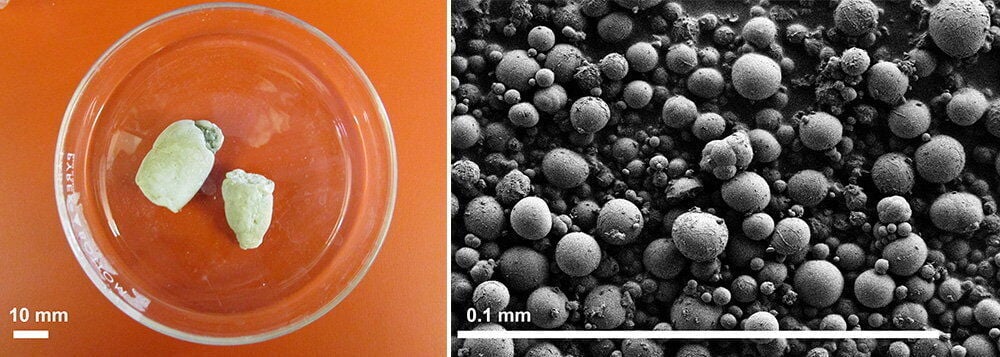
Reptiles don't urinate like humans do; instead, they pass these solid urates (left). (Journal of the American Chemical Society via SWNS)
By Stephen Beech
Crystals "peed" by snakes could hold the key to treating kidney stones and gout in humans, say scientists.
Researchers investigated the solid urine of more than 20 reptile species and found spheres of uric acid in all of them.
The study was published in the Journal of the American Chemical Society. reveals how snakes and other reptiles uniquely package and eliminate crystalline waste.
Scientists say their findings could lead to better treatments for human conditions that also involve uric acid crystals, such as kidney stones and gout.
The research team explained that, in humans, excess nitrogen in the form of urea, uric acid and ammonia are flushed out in the urine.

Beckie Thurmond
But many reptiles and birds package up some of the same nitrogen-containing chemicals into solids - or “urates” - that they excrete.
Scientists believe that the process may have evolved as a way to conserve water.
While forming crystals in pee is a potential evolutionary advantage for reptiles, researchers say it is a serious issue for humans.
When too much uric acid is present in the human body, it can solidify into painful shards in the joints, causing gout, or in the urinary tract as kidney stones.
Professor Jennifer Swift and her colleagues at Georgetown University in Washington, DC, investigated how reptiles excrete crystalline waste safely, studying urates from more than 20 reptile species.

(Photo by Soubhagya Maharana via Pexels)
Swift said: “This research was really inspired by a desire to understand the ways reptiles are able to excrete this material safely, in the hopes it might inspire new approaches to disease prevention and treatment."
Microscope images revealed that three species - ball pythons, Angolan pythons and Madagascan tree boas - produced urates consisting of tiny textured microspheres varying from one to 10 micrometres wide.
Swift said: "X-ray studies showed that the spheres consist of even smaller nanocrystals of uric acid and water."
The research team also discovered that uric acid plays an "important" role in converting ammonia into a less toxic, solid form.
They believe that uric acid may actually play a similar protective role in humans.
Swift added: "Though further studies are needed, this work’s insights into snake pee could one day have important implications for human health."























(0) comments
Welcome to the discussion.
Log In
Keep it Clean. Please avoid obscene, vulgar, lewd, racist or sexually-oriented language.
PLEASE TURN OFF YOUR CAPS LOCK.
Don't Threaten. Threats of harming another person will not be tolerated.
Be Truthful. Don't knowingly lie about anyone or anything.
Be Nice. No racism, sexism or any sort of -ism that is degrading to another person.
Be Proactive. Use the 'Report' link on each comment to let us know of abusive posts.
Share with Us. We'd love to hear eyewitness accounts, the history behind an article.